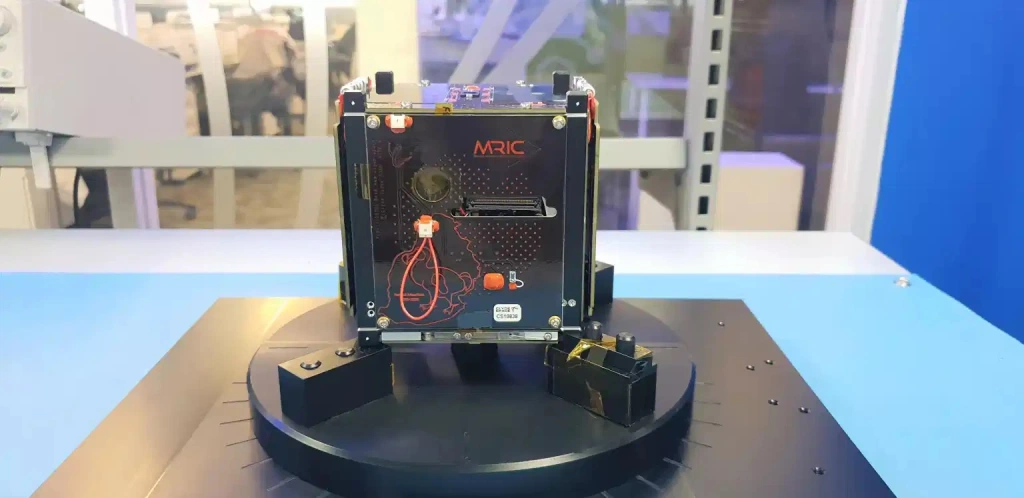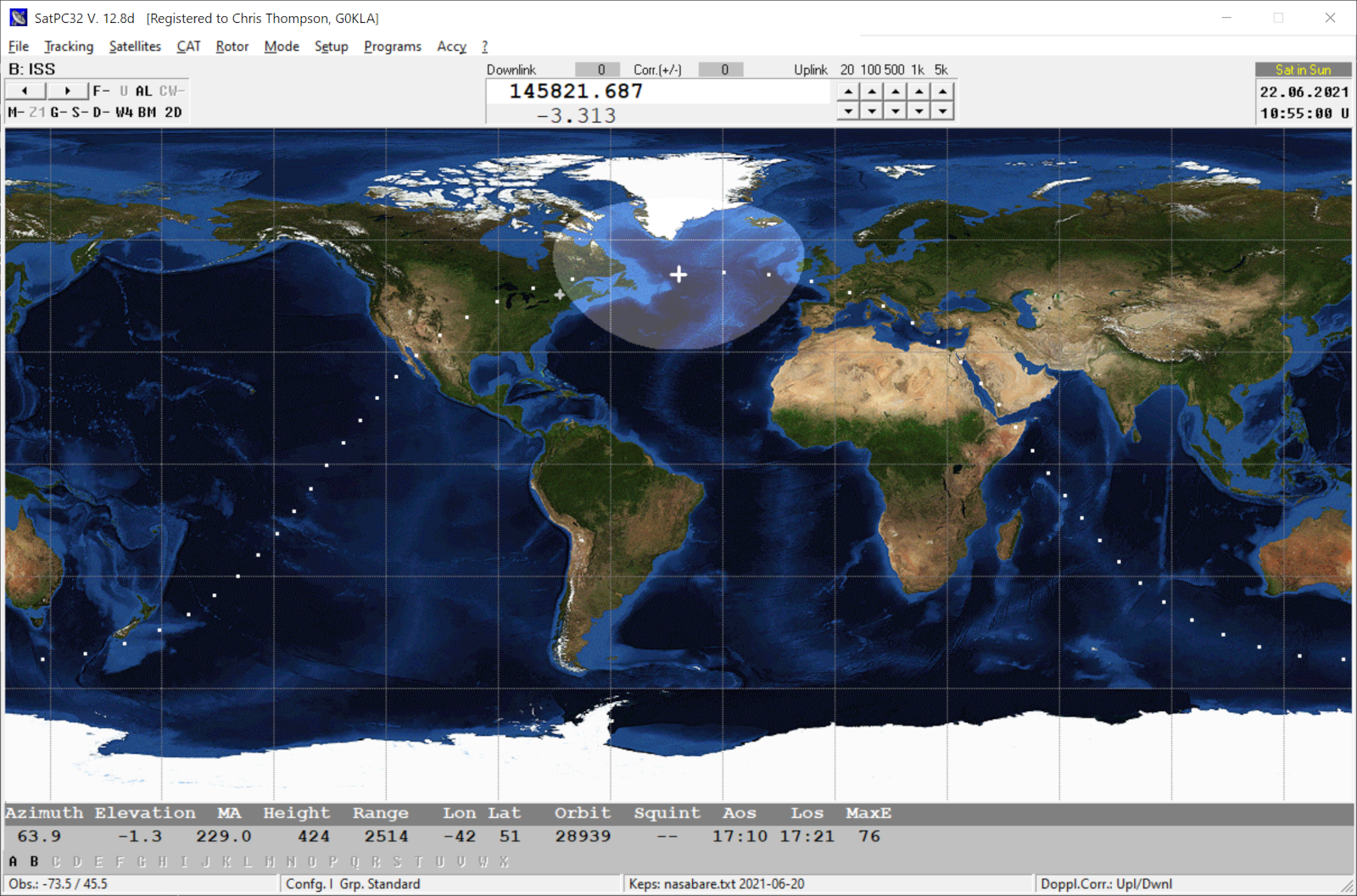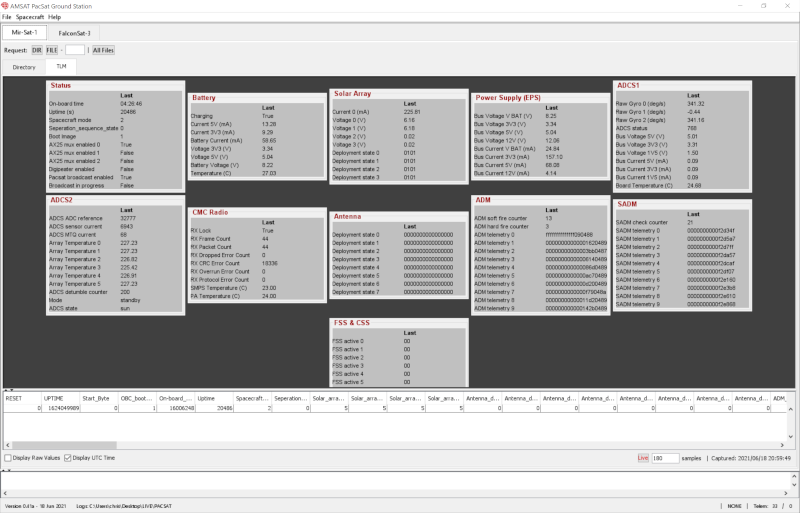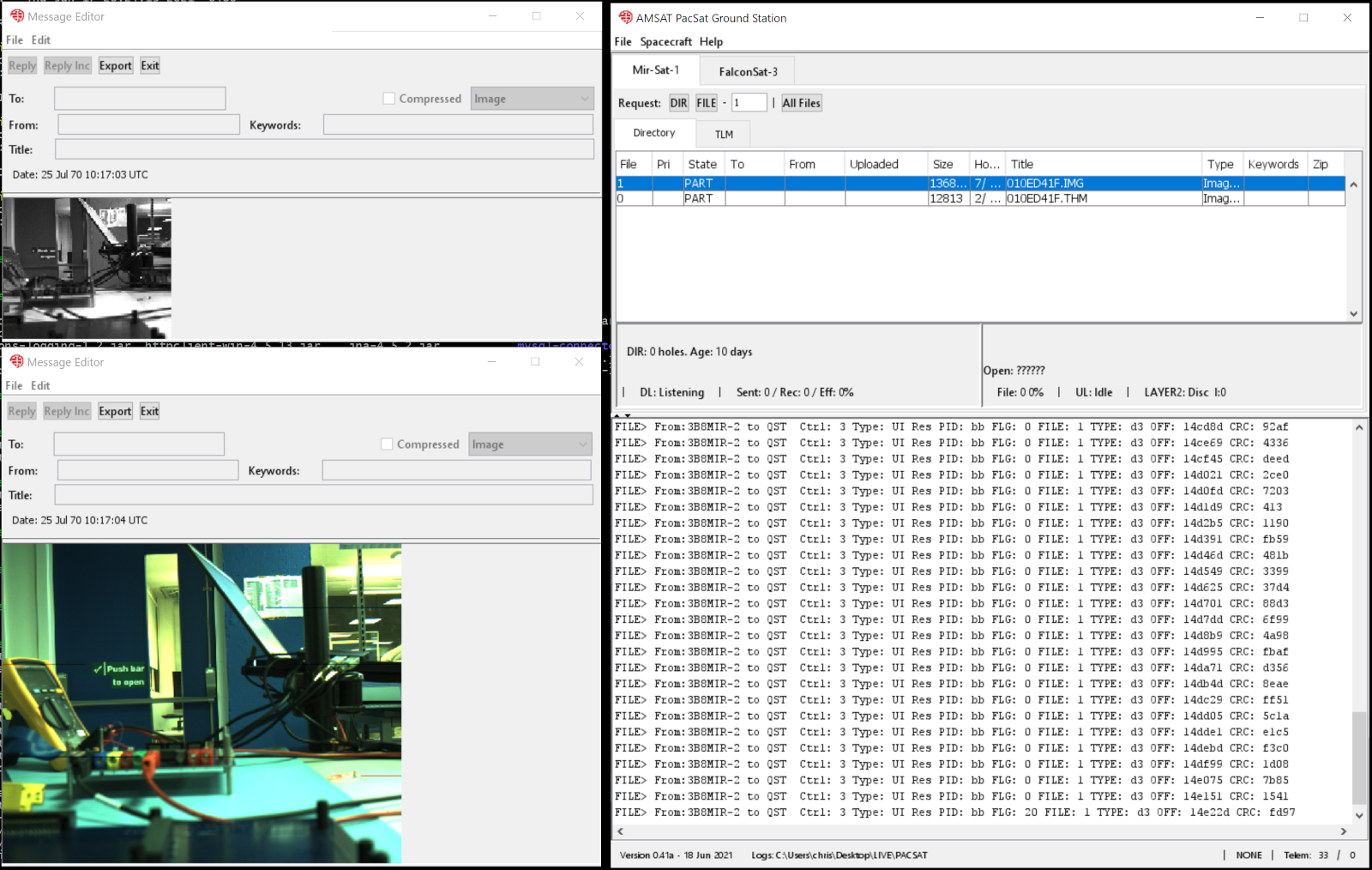

Mir-Sat-1 (Mauritius Imagery and Radio Communication Satellite -1) is the first Mauritian satellite. It is a 1U cubesat that will communicate on Amateur Radio frequencies using the Pacsat protocol and with support of an AX25 digipeter. It will use an onboard Camera to take pictures over Mauritius. These will be stored in the onboard file system. Amateur radio stations equipped with a suitable Pacsat Ground station will be able to request the directory of stored files. They can then ask for the files to be broadcast. In addition to Radio Amateurs, non licensed citizen scientists and other interested parties can listen to the broadcasts and receive telemetry.

I don't know how long the deployment timer is before the transmitter turns on. It looks like the first viable pass over the US will be about an hour later at 8am (Eastern Time).

Telemetry will also be broadcast from the spacecraft. The Mautitius Research and Innovation Council (MRIC) have asked for support receiving telemetry around the world. Telemetry will be forwarded to SatNogs where you can check the progress of Mir-Sat-1 telemetry uploads
If you are going to be a receive only ground station to monitor telemetry then a Software Defined Radio (SDR) is a good approach. Buy an rtl-sdr and follow the setup instructions at rtl-sdr.com. If you want a better quality receiver with better rejection of unwanted signals then get a Funcube Dongle or Airspy. If you use an SDR you will likely need a directional antenna such as a hand held arrow or a good antenna in the clear with a mast head pre-amp.
If you are a licensed Radio Amateur and want to be able to request the directory and files then you will need a full duplex radio that is capable of 9600 bps packet radio. If you need help assembling the right equipment then ask for help on the amsat-bb mailing list.You have three options for the software to decode the signal:
I have written a new version of the Pacsat Ground station for Mir-Sat-1. This will allow you to interact with the spacecraft to request a directory, mark files for download (automatically if you setup the right rules) and to receive files. It will also receive telemetry, forward it to SatNogs and store it in a local database on your machine for your own science projects. You can see example screen shots below showing two test files from the lab, one a small thumbnail and one a larger size.

In addition to the software you will need a Terminal Node Controller (TNC) to interface to your SDR or radio. You can use a hardware or software based TNC, such as hs_soundmodem
If you are using hs_soundmodem, the first question is, which decoder setting do I use? Follow the settings in the PacsatGround manual for FalconSat-3. GMSK is just Frequency Shift Keying. The acronym stands for Gaussian Minimum Shift Keying. The minimum shift part means that the data and carrier are synchronized so that the data changes happen when the carrier is zero. This removes phase discontinuities. The data is run through a Gaussian filter to reduce the sideband power. This makes it a very power efficient mode and it is part of the GSM Mobile Phone standard. It is a good choice for something battery powered, like a phone or a small spacecraft. With that said it is harder to decode than straight FSK with a Root Raised Cosine Filter. But it is just FSK. So we don't need to use a special GMSK decoder, we can just use the hs_soundmodem "FSK G3RUH 9600bd" decoder. Once the encoded bits are recovered it is then classic AX25 frame encoding.
If you typically use GNU Radio then get the latest install of Daniel's (EA4GPZ) GR Satellites which has a decoder for Mir-Sat-1. This will fit into your existing work flow. It will decode the images and telemetry. It will also forward the data to SatNogs.
Or you could setup a SatNogs ground station installed on a Raspberry Pi. This can then be scheduled by others to receive telemetry and broadcast packets from the spacecraft.
If you have questions about how to get started or want help then feel free to send me an email.
Enter Comments Here:
Copyright 2001-2021 Chris Thompson
Send me an email